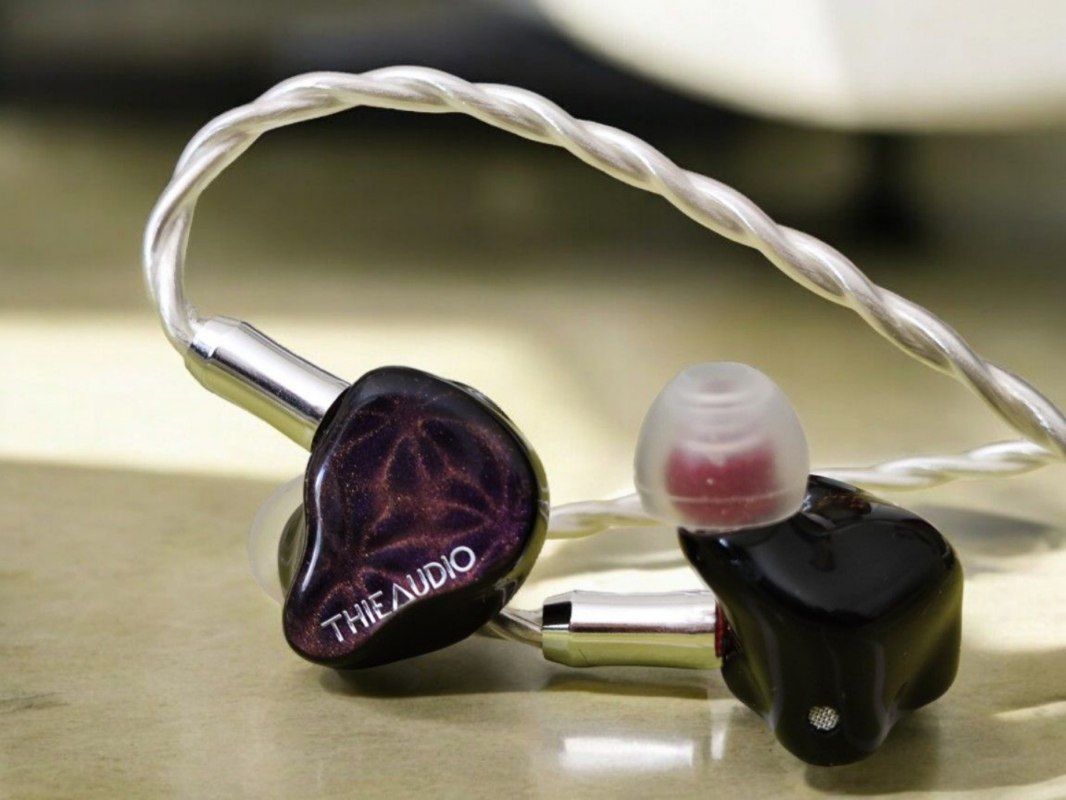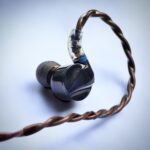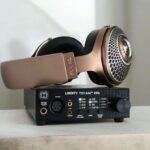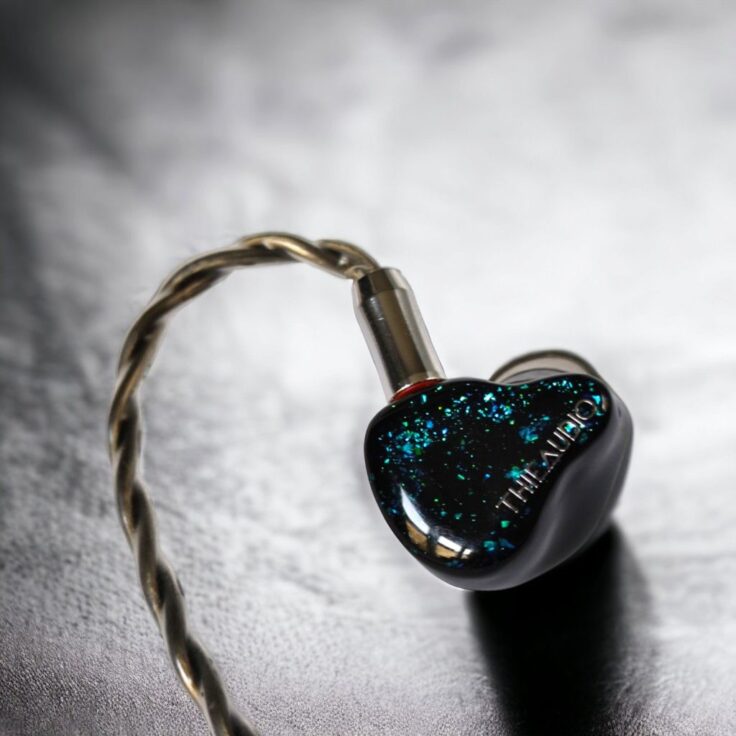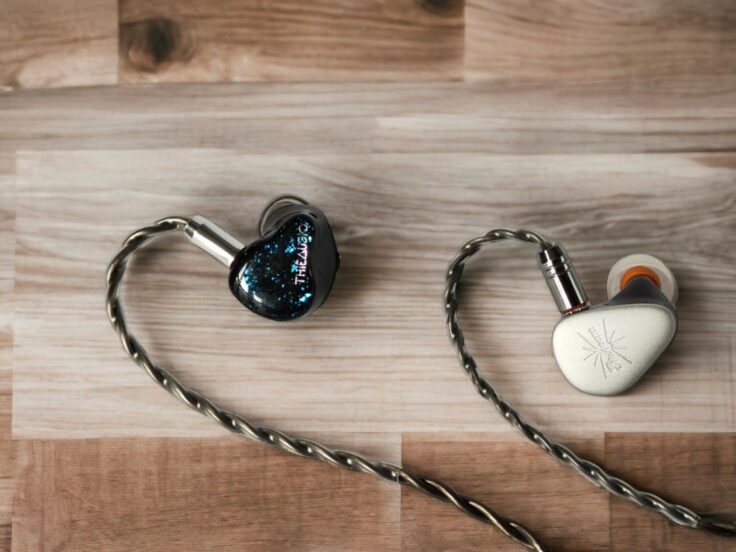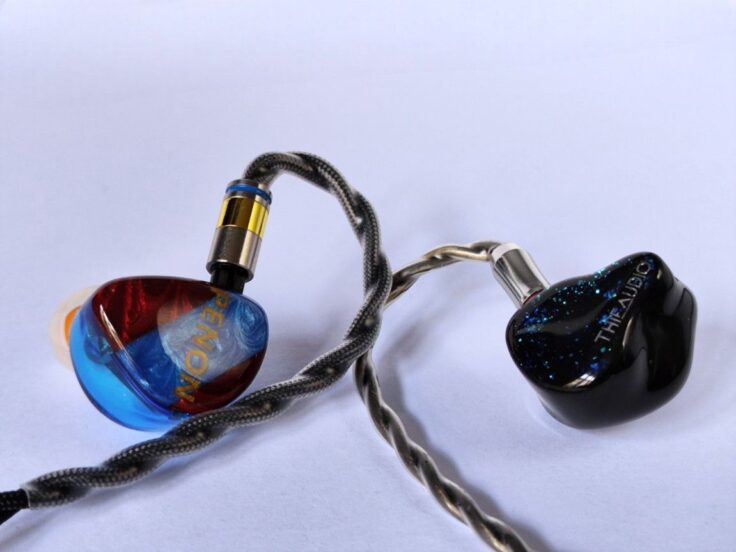The Hype 2 is a four-driver IEM from Thieaudio, a company that since the start up in 2019 has established itself as one of the leading brands of in-ear monitors.
“HYPE” stands for “Hybrid Performance,” with the number “2” referencing its dual dynamic drivers and dual balanced armature drivers.
The bass is handled by a system called IMPACT², a subwoofer technology featuring two 10mm composite diaphragm drivers arranged in a configuration that works with an isobaric chamber to secure constant pressure and an even frequency response.
The rest of the frequency spectrum is handled by two balanced armature drivers: the latest iterations of Sonion’s 2300 and E25 drivers. Both claim ultra low distortion and are carefully selected. Specifically, the midrange is handled by the Sonion P2356HF/4, the treble by the Sonion E25ST001/D, the latter claiming electrostatic-like treble performance.
MAIN TAKEAWAY
- Neutral, slightly dark sound signature
- Smooth yet highly resolved mids and highs
- Deep and full yet non-overpowering bass
- Easy to drive and versatile across sources
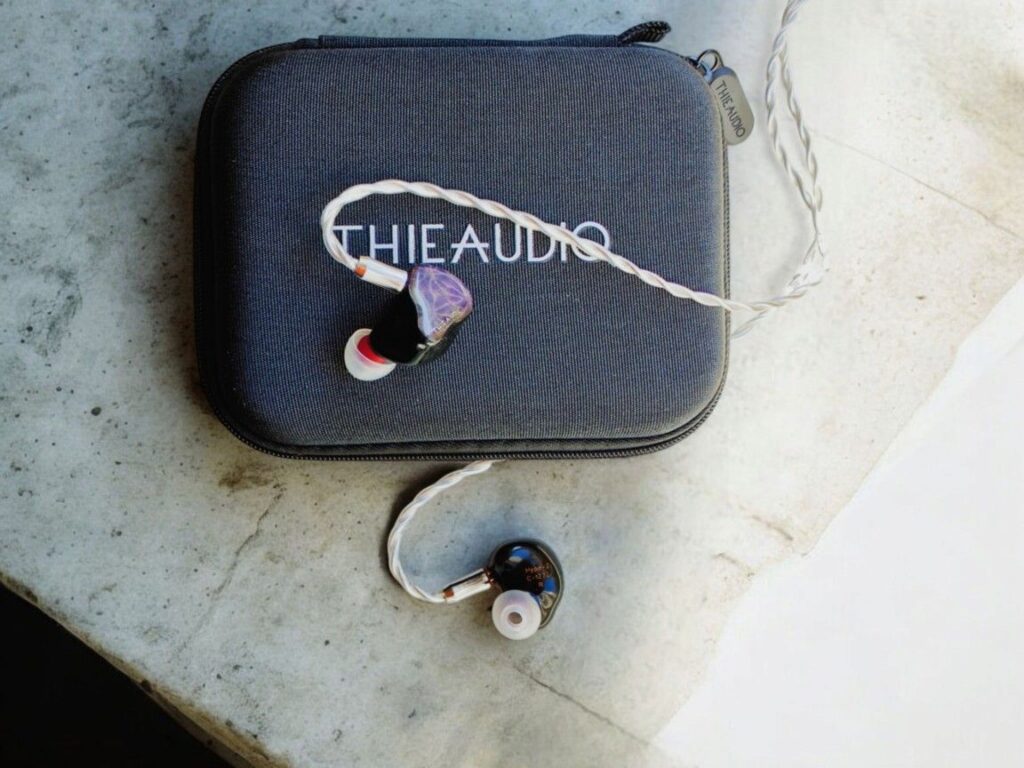
Image credits: The Headphoneer
THIEAUDIO HYPE 2 SPECIFICATIONS
- Drivers: 10mm dynamic drivers (x2) + Sonion 2300 (x1) + Sonion E25 (x1)
- Sensitivity: 108dB/Vrms@1KHz
- Impedance: 25Ω@1KHz
- Frequency Response: 20Hz-40kHz
- Nozzle Diameter: 6.2mm
- Inner Nozzle Diameter: 5.0mm
- Earphone connectors: 0.78mm dual-pin
- Cable termination: 3.5mm jack
- Cable length: 1.2m
- In the box: Silicone and foam ear tips (S,M, L) and a carrying case
Reviewed at $299.00. I want to thank Linsoul for providing the review sample.
You can check the current prices here:
- Linsoul: Thieaudio Hype 2
- Amazon: Thieaudio Hype 2
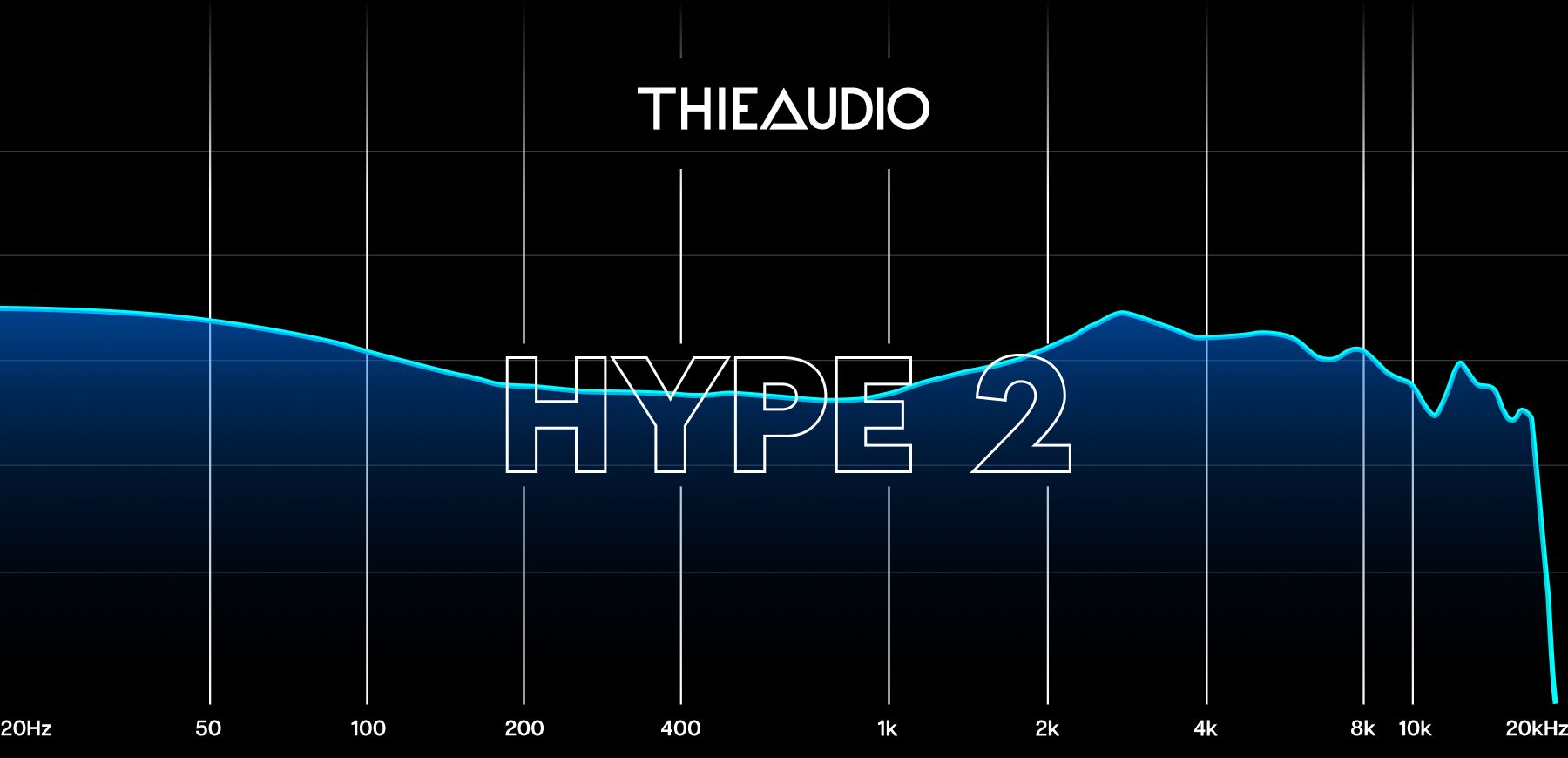
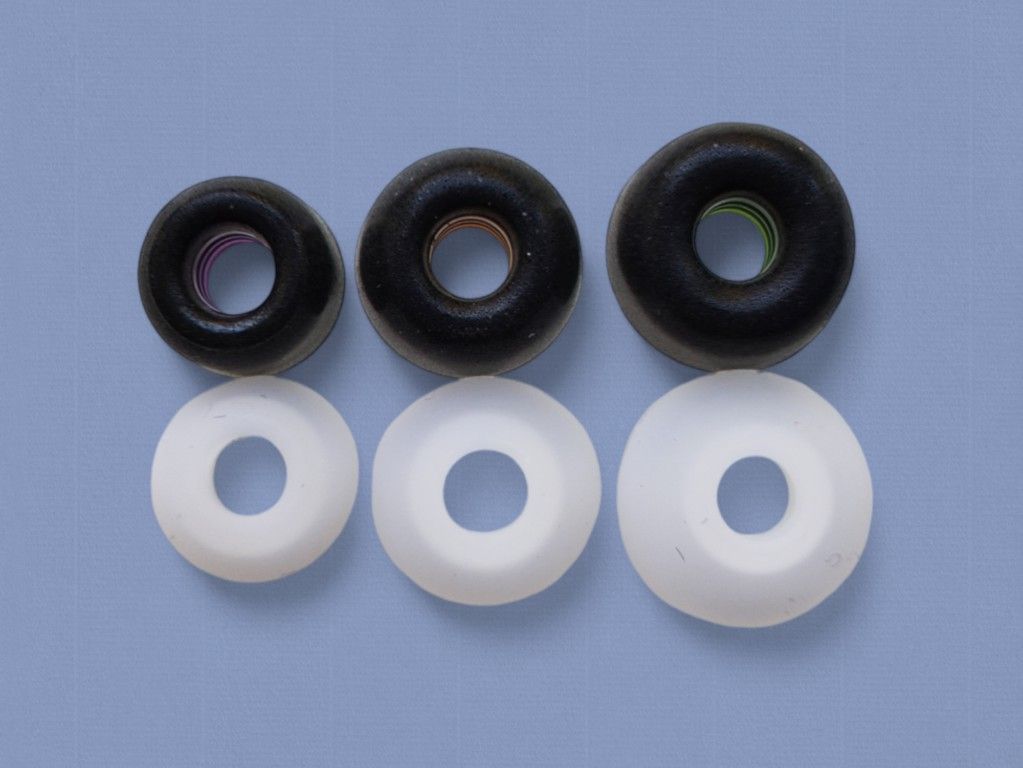
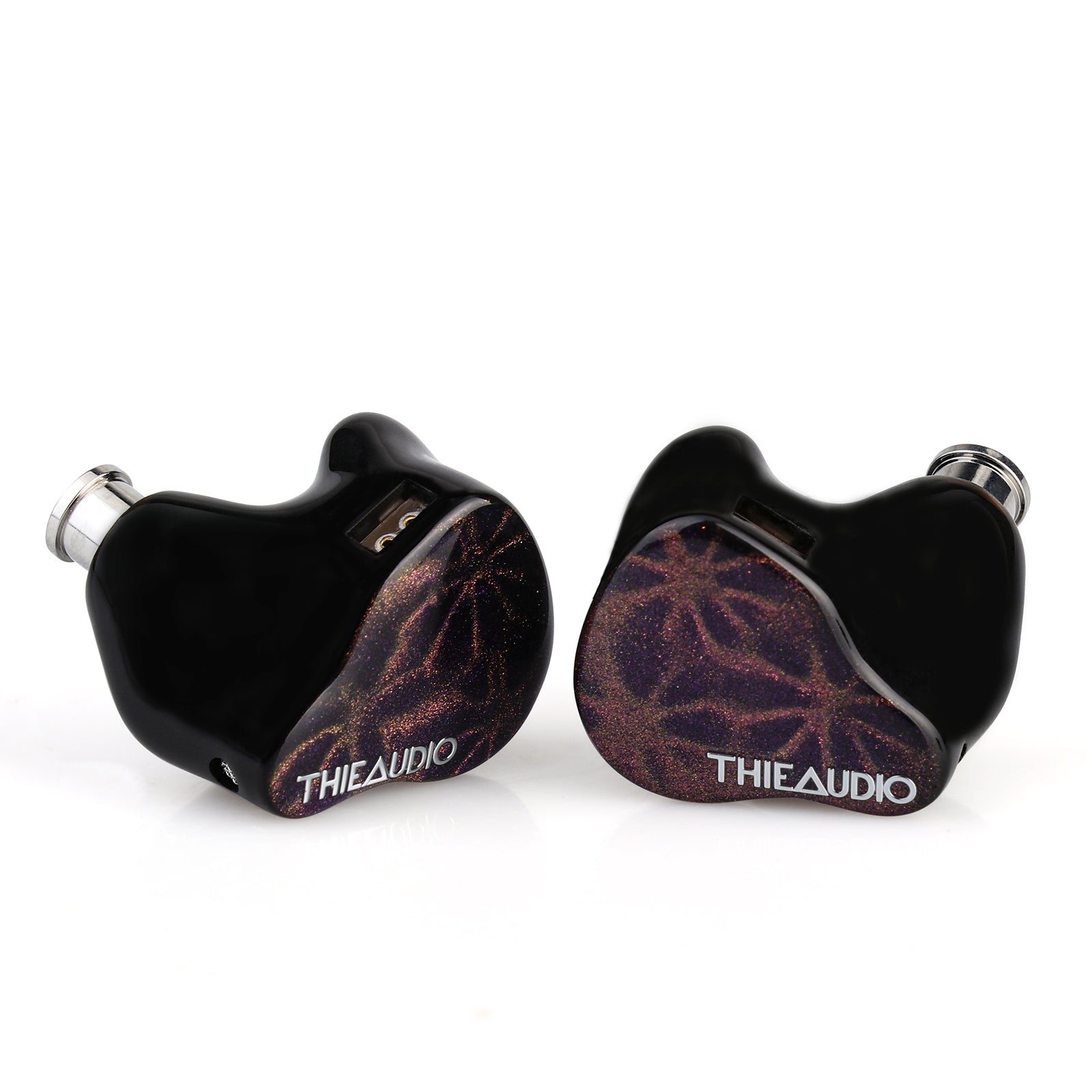
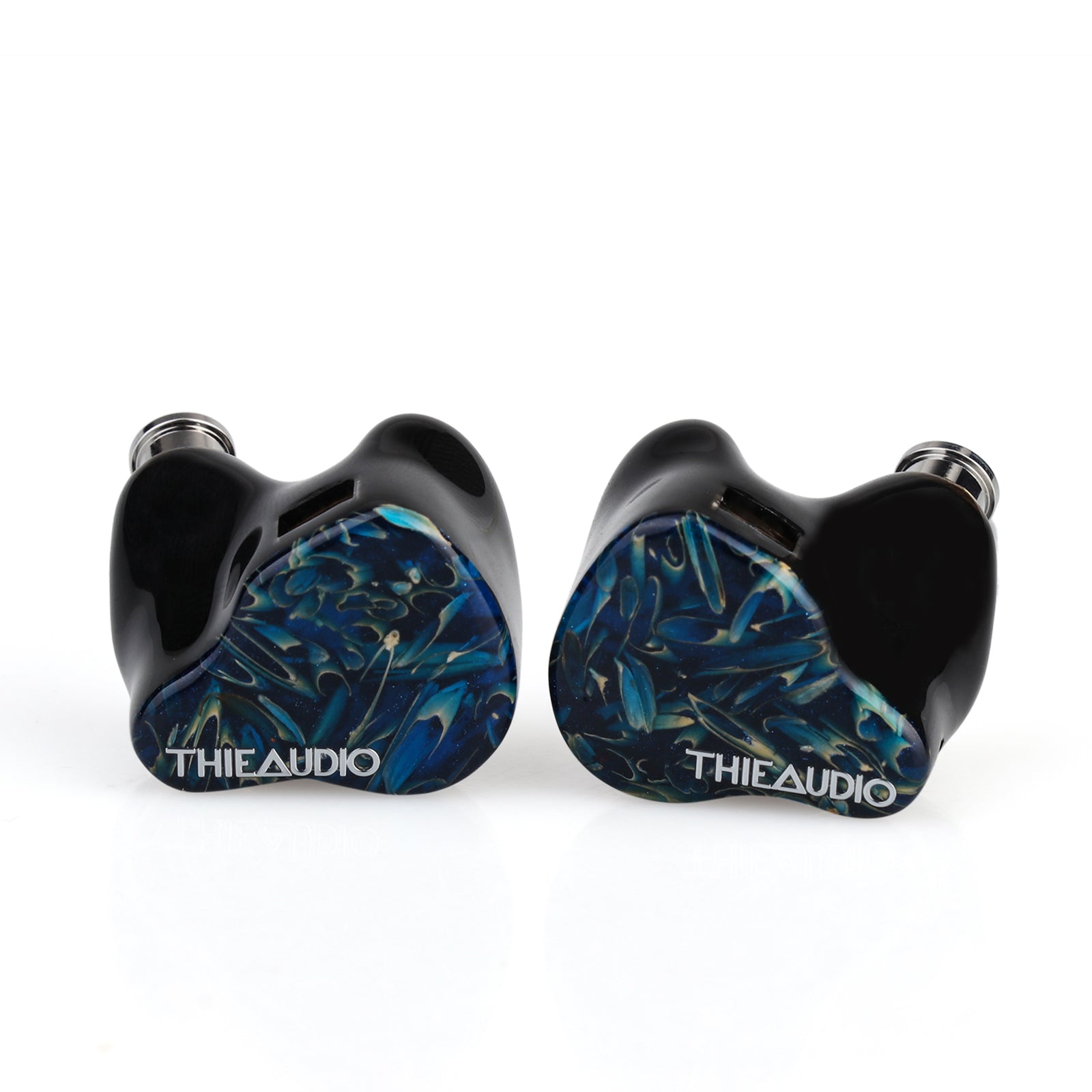
BUILD, DESIGN, AND COMFORT
The housing of the Hype 2 is made of 3D printed resin. It has non-detachable metal nozzles and a decorative faceplate. It’s available in two colours. The shell is very light and rests comfortably in my ear with its “semi-custom” fit. The 1.2m cable comes with a 3.5mm hardwired jack. There’s a nice, quite large carrying case, a microfiber cloth, and two types of tips in three sizes: 3 pairs of black foam tips and 3 pairs of white silicone tips.
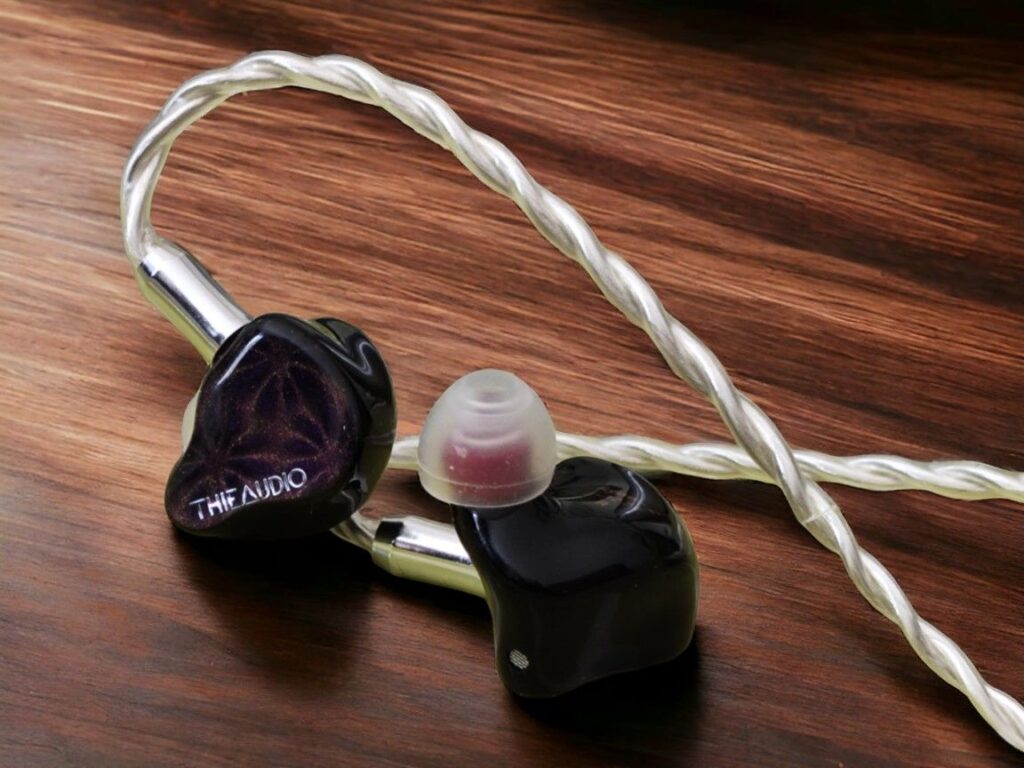
Image credits: The Headphoneer
LISTENING IMPRESSIONS
Associated equipment: Topping A90 amplifier with the RME ADI-2 DAC FS as source. The RME sounds excellent by itself, but it’s more practical for me to use the Topping. I used the Spinfit CP100 ear tips on the Thieaudio Hype 2, which sound excellent and resemble the stock silicone tips.
Daddy Lessons by Beyonce
The instrument separation in the intro is excellent, with a rock-solid bass and clean vocals that maintain clarity without being overly warm. The Hype 2 reveals an impressive level of detail, especially in the subtle background chatter that often goes unnoticed.
Jambi by Tool
The guitars have a smooth texture that remains detailed without any harshness. The vocals are clear, though not particularly warm, and the bass is clean and present without overpowering the mix.
Almost Like The Blues by Leonard Cohen
The bass is very neutral and quite polite in quantity, but high in quality. It’s tight and well-defined. Cohen’s vocals are clear, clean, but not very warm.
As Before by Olga Konkova
Again, the bass is high in quality but relatively modest in quantity. The cajôn drum is snappy but not exactly thunderous. The piano and vocals are clean and neutral with lots of fine nuance.
It Could Be Sweet by Portishead
The vocals are very delicate. There are no issues with sibilance. The bass is present but not overwhelming. The treble is detailed and clean, but not sharp or overly crisp.
Escape Route by Boris Blank
The presentation is very balanced. The bass has a nice roundedness, adding some warmth. The midrange is snappier, the treble is very clean. The detail level is high and it’s easy to follow individual instruments.
Spontanious Compositorius by Thomas Aagergard
The saxophone is rendered in a clean and nuanced manner, without added warmth or fullness. The percussion, mostly bells, is also very clean-sounding, without becoming overly crisp or harsh, as it can be with other earphones. The bass is not especially powerful, but well defined and present enough.
Brahms’ Symphony No 2 – III by Paavo Järvi
The Hype 2 handles this orchestral piece with remarkable ease, delivering an abundance of detail where each instrument is clearly distinguishable. The presentation is exceptionally neutral, with no frequency range overpowering the others, resulting in a balanced and effortless sound.
Young Vivaldi Violin Concerto RV 820 III
Once again, the sound is nuanced, subtle, and effortlessly rendered. The tonality is neutral and well-balanced, with a superb sense of spaciousness. You can clearly hear the room’s reverb, adding depth to the instruments’ presence.
Maple Noise by Greene Serene
One of my favorite dynamic jazz instrumentals sounds quite lively with the Hype 2, though not the most mind-blowing in terms of dynamics. It has a refined quality, delivering subtle nuances with an effortless ease that’s truly mesmerizing.
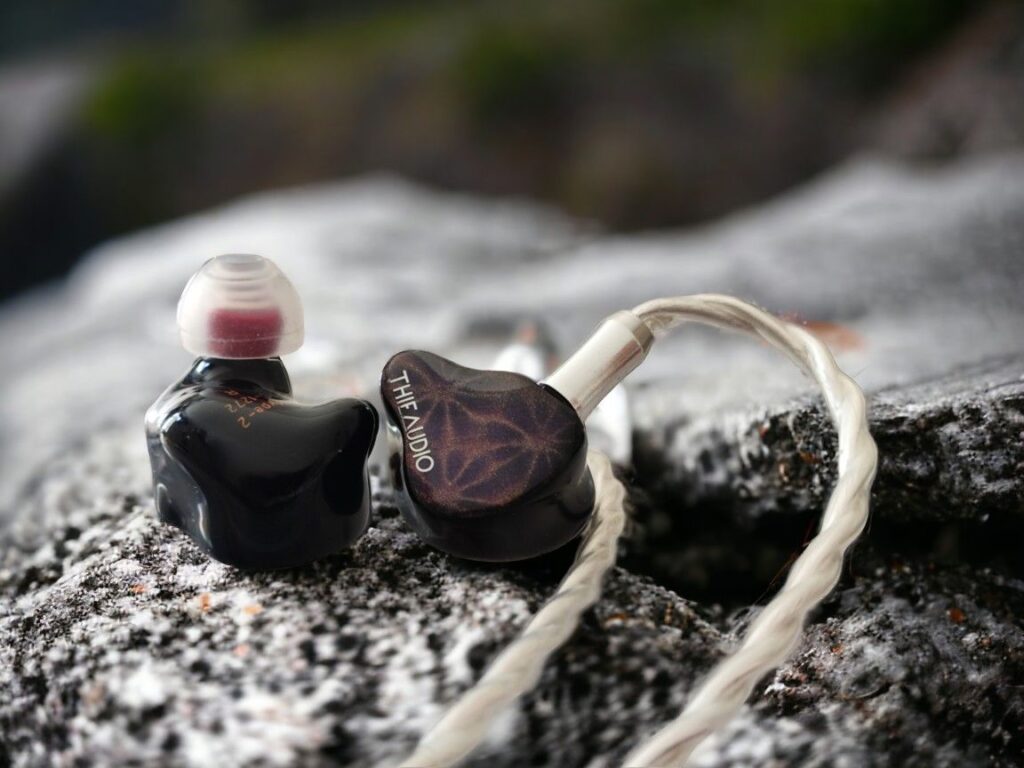
Image credits: The Headphoneer
WRAPPING IT UP
Sound Signature
The Hype 2 stands out for its balanced sound signature, where no single element dominates the mix. This neutrality allows all aspects of the music to be equally noticeable. However, its neutrality leans towards a darker tone, with a subtle bloom in the bass that adds a touch of warmth to the overall sound.
Treble
The treble is refined and effortlessly rendered, providing a high level of detail without becoming overly crisp or bright. There is no noticeable sibilance or harshness.
Midrange
The midrange is neither particularly warm nor cold or recessed; it represents neutrality at its best. It is clean, nuanced, and as effortless in its presentation as the treble.
Bass
The bass is quite neutral, with a linear response that extends deep. It is detailed, well-separated, and integrates seamlessly with the rest of the spectrum. While it isn’t the fastest or tightest I’ve encountered and could benefit from a tad more precision, its slight decay adds a sense of fullness, warmth, and body to the music, which is quite appealing. Although it may not be class-leading in terms of tightness, it integrates nicely with the rest, never bleeding into the midrange.
Soundstage and Imaging
The soundstage wide and open, with excellent instrument separation and impressive layering. While the depth of imaging isn’t as remarkable as the other aspects, it is still quite good. This may also vary depending on ear tips and individual ear canals.
Detail, Dynamics, and Timbre
The detail level is generally very high, with the treble and midrange standing out for their fine detail and “plankton.” The bass, while still detailed, is somewhat less impressive by comparison.
When it comes to dynamics, the Hype 2 strikes a balance, offering a sound that is neither overly punchy nor dull, much like a neutrally tuned earphone should be expected to perform.
The timbre of the mids and highs are organic, smooth and a tad dark-leaning, while the bass is slightly thick and full-bodied.
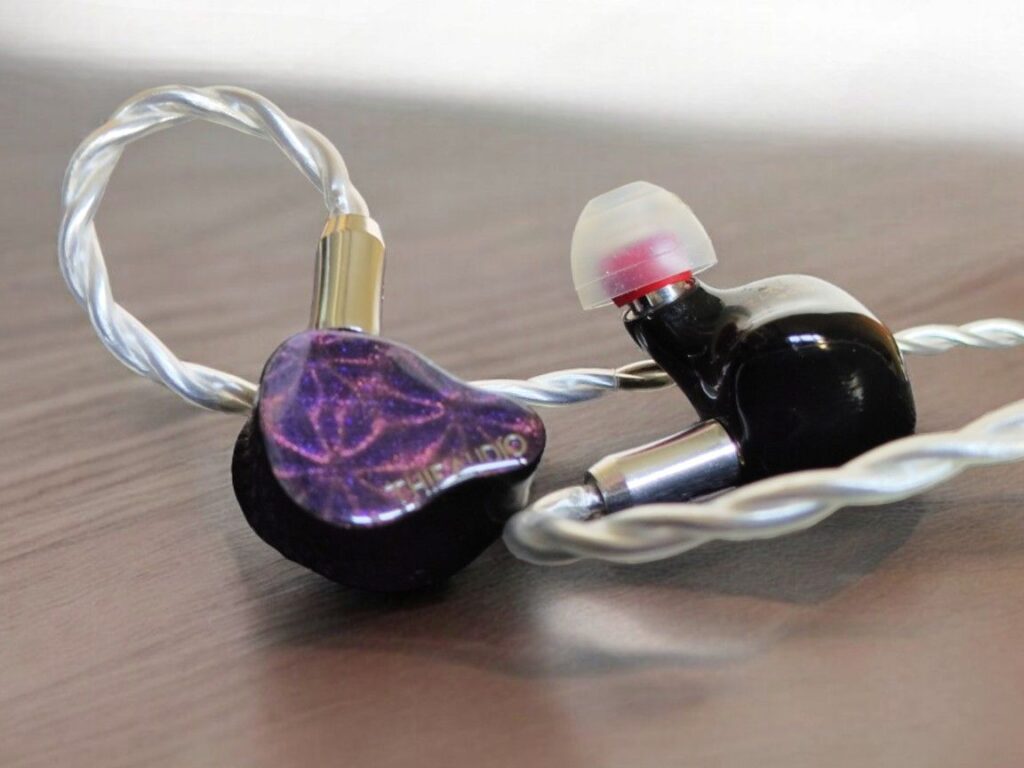
Image credits: The Headphoneer
COMPARISONS
KIWI EARS QUINTET vs. HYPE 2
Like the Hype 2, the $219 Kiwi Ears Quintet is a multi-driver hybrid IEM. However, where the Hype 2 sticks to a double dynamic driver and two balanced armatures, the Quintet combines a dynamic driver with a planar magnetic driver, two balanced armatures, and even a piezoelectric bone conductor. My full review of the Kiwi Ears Quintet can be found here.
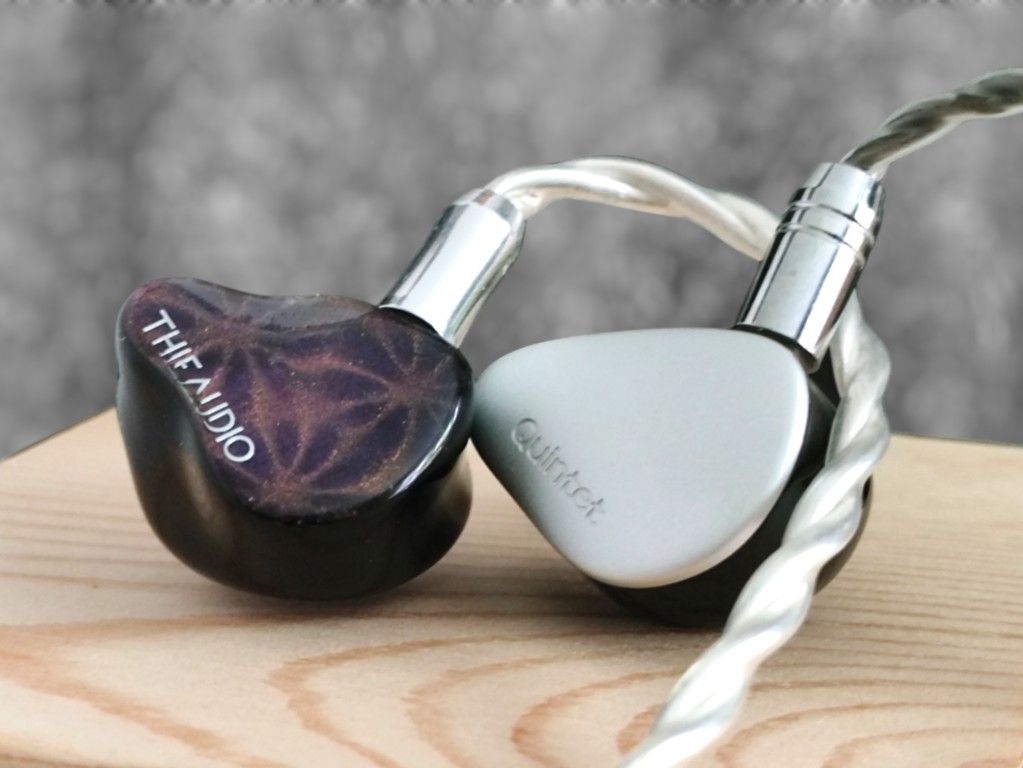
Image credits: The Headphoneer
Both earphones offer a fairly neutral sound signature. They’re not identically tuned, though. The Quintet has more pronounced mids and highs, while the Hype 2 has a fuller bass response.
Neither model emphasizes treble excessively, both avoid intrusive brightness and bothersome sibilance. However, the Quintet features a brighter and crisper treble with stronger articulation and dynamics. In contrast, the Hype 2 offers a more refined and subtle treble, conveying fine details in a smoother, more subtle manner.
Both earphones present a neutral midrange that is neither too warm nor recessed. However, in direct comparison, the Quintet’s midrange is brighter and crisper, while the Hype 2 is more polite, delicate, and nuanced.
The bass is also relatively neutral with both. However, the Quintet offers tighter and more defined bass with less quantity, whereas the Hype 2 delivers a fuller, richer bass with a longer decay, adding warmth and a subtle roundness.
Both earphones provide an open and wide soundstage. The Hype 2 excels in instrument separation, while the Quintet compensates with better articulation and crispness, resulting in a similar overall imaging experience.
Both models offer excellent detail, with the Quintet standing out in the lower frequencies and the Hype 2 being more nuanced in the midrange and treble. In terms of dynamics, the Quintet is more articulate. For timbre, the Hype 2 is smooth and polite, particularly in the mids and highs, while the Quintet is crisper and more assertive.
- Linsoul: Kiwi Quintet
- Amazon: Kiwi Quintet
LETSHUOER CADENZA 4 vs. HYPE 2
The newly launched Letshuoer Cadenza 4 is also a hybrid IEM. It has four drivers: one dynamic and three balanced armatures. You can read my full review of the Cadenza 4 here.
As the Hype 2, the Cadenza 4 has a relatively neutral sound signature, but in direct comparison, the Hype 2 is darker and lusher with fuller bass, while the Cadenza 4 is brighter and more articulate.
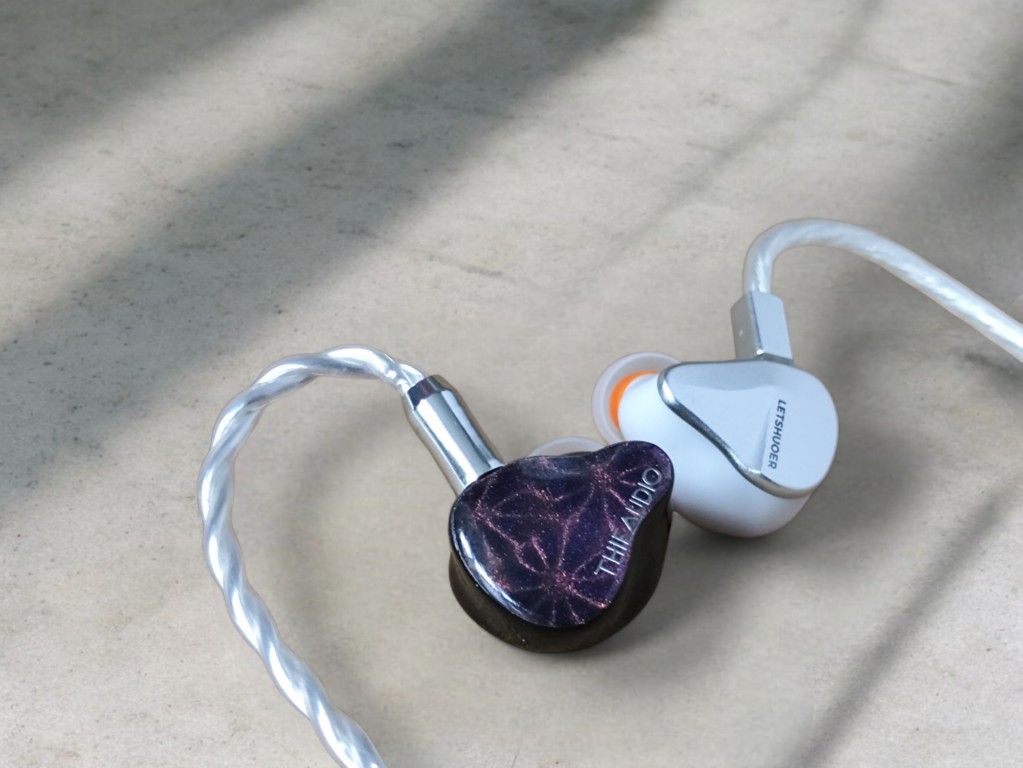
Image credits: The Headphoneer
The Cadenza 4 delivers the crispest and most energetic treble, contrasting with the lush and delicate treble of the Hype 2. The Cadenza 4 also has a more energetic and pronounced upper midrange, giving it a brighter sound compared to the more toned down Hype 2. The Cadenza 4 offers less bass quantity but it’s very tight and well-defined, significantly thinner sounding than the thicker and rounder bass of the Hype 2.
As the Hype 2, the Cadenza 4 offers a wide and open soundstage with excellent imaging, including great depth and layering. While both deliver impressive detail, they do so differently— the Hype 2 is smoother and more laid-back, while the Cadenza 4 is crisper and more upfront. Dynamics are comparable, but the Cadenza 4 feels slightly snappier and more articulate. Both earphones have a natural and neutral feeling timbre, but the Cadenza 4 is crisper and brighter.
SIMGOT EA1000 vs. HYPE 2
The $219 Simgot EA1000 is quite differently constructed than the Hype 2. It uses a single dynamic driver, it has a metal chassis, and it has interchangeable tuning nozzles. Still, they have much in common in terms of how they sound.
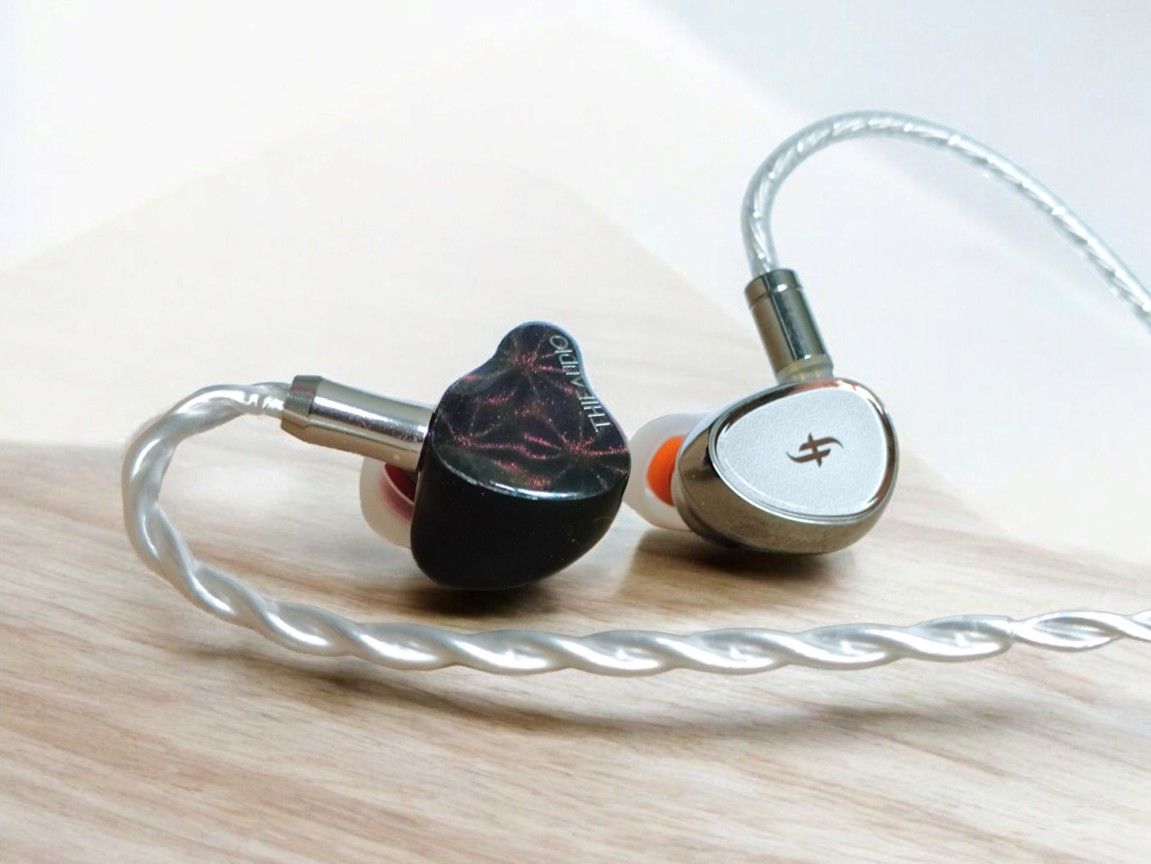
Image credits: The Headphoneer
The EA1000 has tuning nozzles that impact the sound. I used the golden brass nozzles, which I find to be the best all-rounder for the EA1000. You can read more about the nozzles in my EA1000 review here.
The EA1000 and the Hype 2 have similar, quite neutral, sound signatures. The EA1000 can be characterized as “neutral to warm”, while the Hype 2 is more “neutral-dark”. How different they sound depends on the track due to varying frequency responses.
The treble of the EA1000 is natural and smooth, without sharpness. It is similar to the Hype 2, but not quite as resolved. However, the EA1000 often has more articulation, making it occasionally sound brighter.
The EA1000 offers a warm, full midrange with good presence and natural timbre. Hype 2’s midrange is slightly less warm in comparison, leaving more space for other frequencies, and it’s also slightly more detailed. Both have full-bodied, textured bass with similar quantity and quality.
They both provide an open soundstage and offer great imaging. Hype 2 generally offers better separation and detail, while EA1000 sometimes has more punch. Timbre is natural and organic in both, with the EA1000 often sounding slightly fuller in the midrange.
- Linsoul: Simgot EA1000
- Amazon: Simgot EA1000
COMPARISONS CONCLUDED
The four earphones compared aren’t very different in absolute terms. The Hype 2 does, however, come out as the darker sounding of the bunch, but also the most effortless and detailed sounding, at least in the mids and highs. The EA1000 is very close to the Hype 2 in terms of tonality, while the Kiwi Ears Quintet and especially the Letshuoer Cadenza 4 are crisper and brighter.
AMPLIFICATION
All listening tests so far have been conducted using my desktop setup. However, most users will likely use the Hype 2 with portable amps and sources.
With Quboz on my POCO F5 phone’s headphone output, it already sounds very good. I could easily be happy with this sound for a weekend trip. It stays in the +/-50% volume range.
The Jade/FiiO JA11 sounds better; the Dragonfly Cobalt even more so. It’s very good, a bit fuller and more effortless. It’s close to my desktop rig. So is my favourite affordable portable DAC/Amp at the moment, the $89 Letshuoer DT03.
In conclusion, it seems like the Hype 2 isn’t very picky on the amplifier, but being very high in resolution, it will benefit from cleaner and clearer sources.
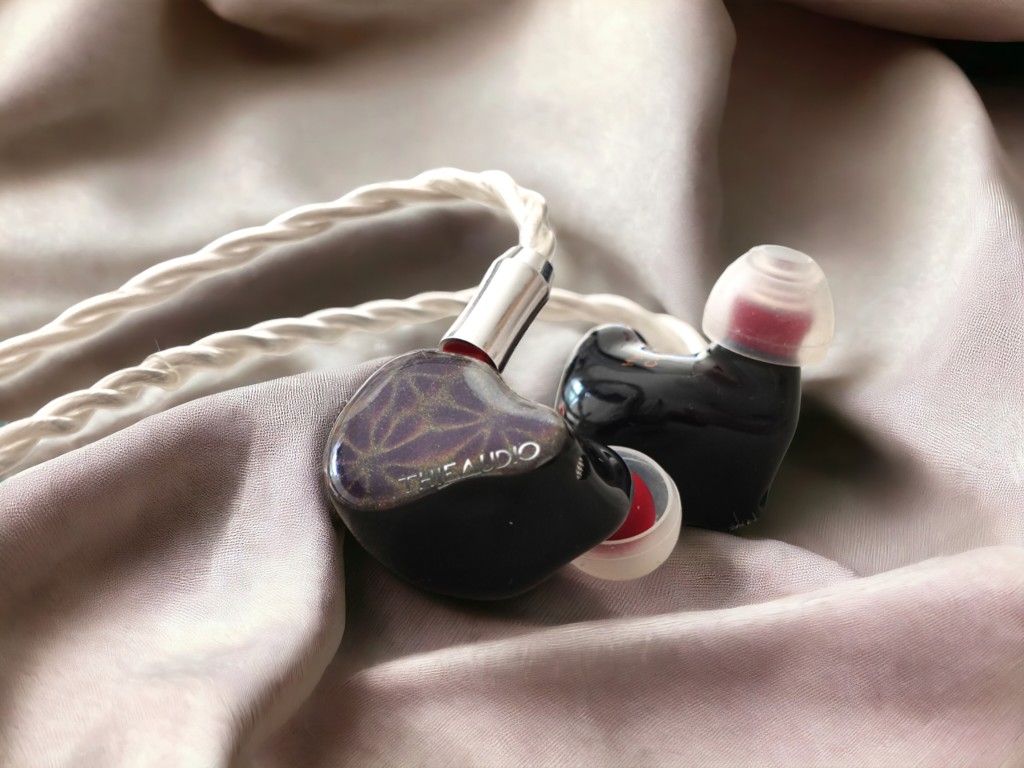
Image credits: The Headphoneer
CONCLUSION
The Hype 2 is an excellent IEM with a neutral, slightly dark-leaning sound signature.
Its dual dynamic and balanced armature drivers provide impressive detail, especially in the mids and highs. The treble is resolved, delicate and articulate yet never too crisp; the midrange is nuanced and slightly warm yet never too thick. The bass is linear-sounding, goes deep, and has a slight fullness that never overpowers the mix.
The soundstage is wide, and there is excellent instrument separation and imaging. The Hype 2 is versatile and pairs well even with modest sources, yet still scales with better upstream equipment.
With its neutral, slightly dark tonality and clear, refined, and smooth sound, the Hype 2 is a strong contender in its price range.
You can purchase the Hype 2 using our links:
- Linsoul: Thieaudio Hype 2
- Amazon: Thieaudio Hype 2
Any purchase you make on Amazon or Linsoul with any of our affiliate links will give us a small provision at no cost to you.
We only get a provision for items that are not returned, so there’s no incentive for us to recommend something that’s not good.
Linsoul : Headphones, Earbuds, Wireless Earbuds, Desktop DAC/AMP, Portable DAC/AMP, Digital Audio Players,
Amazon: Headphones, IEMs, Headphone Amplifiers, Home Audio or Anything else.
.
If you enjoyed this article or other content on The Headphoneer, you might consider leaving a small donation to keep this website up and running. No donation is too small. Thanks for supporting us!
If you like our work please follow us on Instagram, Facebook and Twitter , it will help us grow. Sharing is caring 🙂


